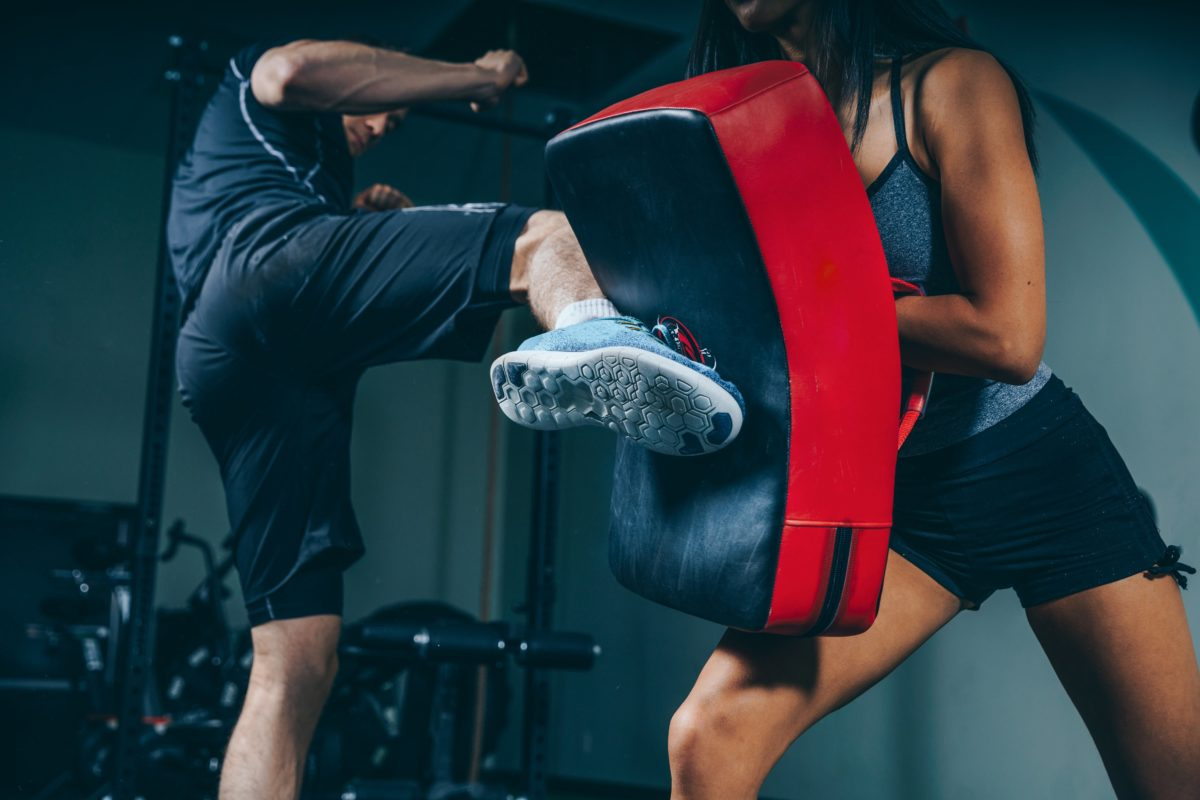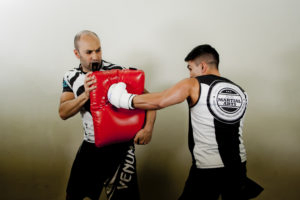As a fitness professional, you’re probably aware that many clients love putting on some boxing gloves and hitting the pads. This is great, however are you running your boxing for fitness session to its full potential?
Boxing for fitness, (commonly known as Boxercise) is more popular than the actual competitive sport of boxing itself; it’s one of the most popular exercise modalities in the fitness industry.
If taught correctly, research shows that boxing is extremely beneficial in improving cardiovascular health, strength, reaction time & mental health. It also benefits people with diabetes and those who suffer from Parkinson’s disease.
Boxing is a sport characterised by short duration, high-intensity bursts of activity, requiring significant anaerobic fitness, within a well-developed aerobic system. Boxing is estimated to be 70-80% anaerobic and 20-30% aerobic.
Unfortunately many boxing for fitness sessions these days tend towards aerobic and steady state cardio, this isn’t necessarily a bad thing and may improve fitness; however we recommend you take the best out of proper boxing, by teaching the correct technique and conditioning to give your boxing sessions a real ‘punch’.
Here are some tips that can improve your boxing fitness sessions.
- Include boxing shields or boxing bags during the sessions, participants will be able to work at a higher intensity than using just focus pads alone. It’s extremely difficult to work at high intensity using the focus pads. The fact that the participant needs to focus on hitting a small target immediately affects the intensity of the workout. Participants will have a much higher heart rate response and greater calorie expenditure when using the shields or bags.
Learn, practice & teach the correct technique of punching. The power of a punch starts from the ground up, this is referred to as kinetic linking. For example, if you throw a right cross correctly, you’ll engage the combined movements of the foot, knee, quads, hip, torso, shoulder and arm. The will activate more muscles and have greater calorie expenditure. Avoid using only the arms to punch, you must use the entire body!
- Limit the amount of push-ups during the session. Excessive upper body resistance drills will fatigue your clients upper limbs and will impact on the correct technique. This will increase the risk of injury and also make it difficult to punch at a high intensity. Excessive push ups during a boxing for fitness session is counter-productive and ‘old school’. If you must, please save it to the end of the session.
- Avoid long winded combinations that will make the participant focus more on getting the combo correct rather than the quality of the punches. Stick to 2-3 punch combinations for beginners and 2-5 punches for more experienced participants.
If you are a fitness professional or an accredited exercise physiologist and would like to learn more and improve your boxing for fitness sessions register to one of our accredited courses (10 CEC, 8 CPD’s, 3 PDP’s & FITREC). www.acexercise.com.au
Original Post Here

 Learn, practice & teach the correct technique of punching. The power of a punch starts from the ground up, this is referred to as kinetic linking. For example, if you throw a right cross correctly, you’ll engage the combined movements of the foot, knee, quads, hip, torso, shoulder and arm. The will activate more muscles and have greater calorie expenditure. Avoid using only the arms to punch, you must use the entire body!
Learn, practice & teach the correct technique of punching. The power of a punch starts from the ground up, this is referred to as kinetic linking. For example, if you throw a right cross correctly, you’ll engage the combined movements of the foot, knee, quads, hip, torso, shoulder and arm. The will activate more muscles and have greater calorie expenditure. Avoid using only the arms to punch, you must use the entire body!